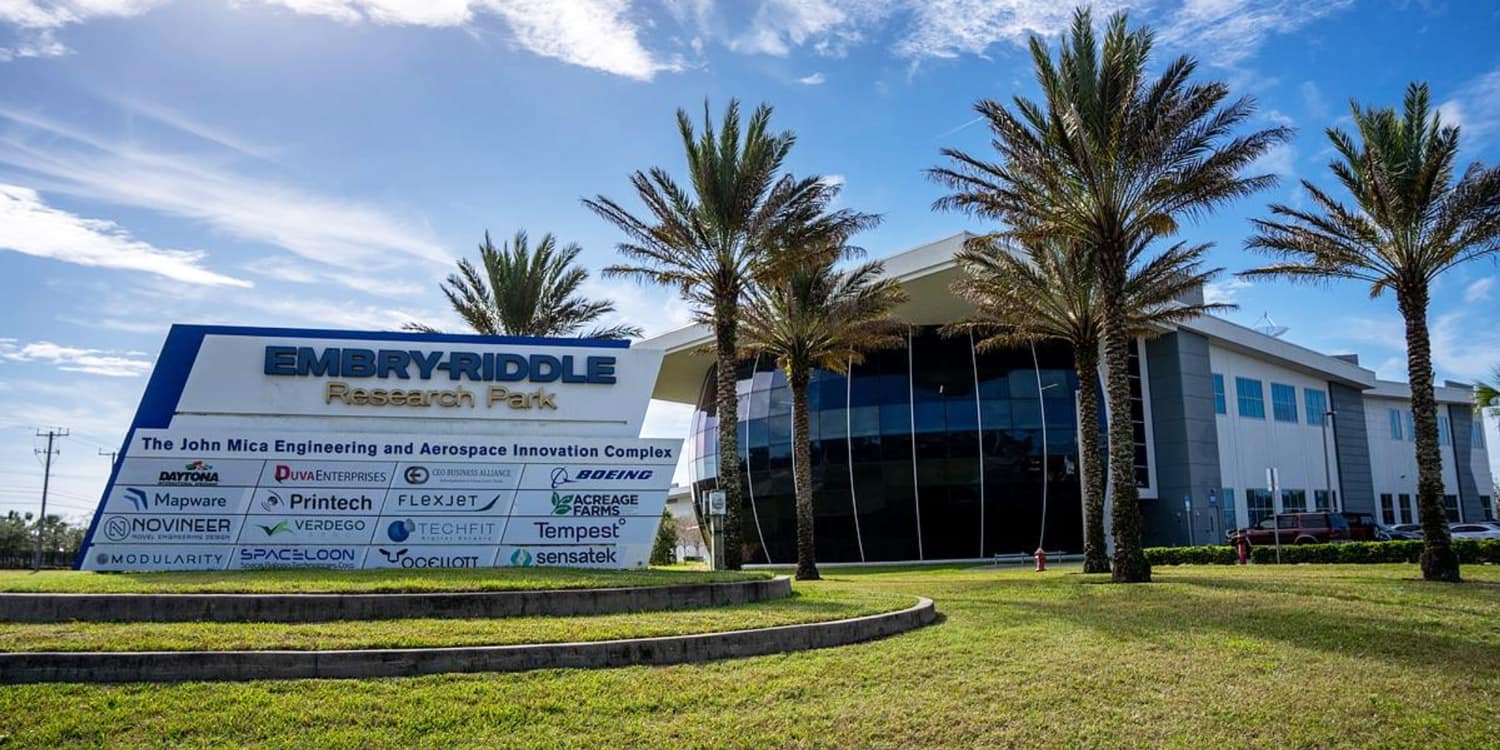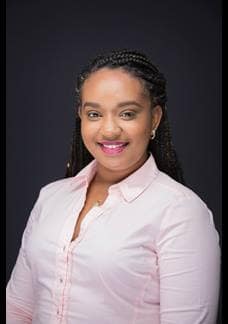
Duva Fellows Propel Discoveries to Improve Efficiency, Safety
↖ This heading is for screen readers and wont be visible on the page.
In 2012, Charles and Elizabeth Duva established Embry-Riddle’s first aerospace engineering fellowship to support doctoral students. The award goes to at least one aerospace engineering graduate student each year.
The generosity of the Duvas reflects a continuing commitment to education and a belief that talented researchers bring immediate and long-term benefits to the community and the industry. Thanks to the stipend that is part of this award, three Duva fellows can focus on research that promises to bring advances to aerospace design, aviation training and performance and safety.
Kaela Barrett Has a Passion for Fast-Acting Innovation

Chasing down some of those “whys” brought her to the U.S. and Embry-Riddle. As an undergraduate pursuing her Bachelor of Science degree in Aerospace Engineering, Barrett worked with the Society of Women Engineers to tutor elementary school students and Girl Scouts in Science, Technology, Engineering and Mathematics (STEM) exploration. She gained industry experience as a co-op student at Gulfstream Aerospace. She then applied the insight she gained as an entrepreneurial lead for a National Science Foundation I-Corps industry engagement team.
In 2018, the Aerospace Engineering Ph.D. program received a grant from the U.S. Department of Education, as part of the Graduate Assistance in Areas of National Need (GAANN) program. Barrett was one of three recent Embry-Riddle graduate students working in critical technology to earn a GAANN award. She plans to complete her doctorate in 2025 with a focus on computational structural mechanics and design optimization. Her current research involves the design and additive manufacturing of new materials that could help aerospace manufacturers create low-cost but highly reliable structures. These unique materials could increase the performance of scanning technologies and stealth fighters.
The Duva Fellowship was additional fuel for her dreams. It allowed her to move on from a university job as teaching assistant in Aerospace Structures. “Without the fellowship, I would not have been able to afford to continue my studies. The freedom to focus on my research is a huge advantage.”
Barrett does not have a dream employer or job title in mind. Her only requirement is that her work be innovative and allow her to pursue her interest in design optimization. “Computational analysis has the potential to be revolutionary for aerospace and space exploration,” she says.
Applying innovation quickly is a big motivator. “Additive manufacturing applications with design optimization can bring fast benefits and you can see the difference it makes right away. A lot of design work is just contributing a small piece of a puzzle that takes years to come together in a new aircraft. My passion is in helping make people’s lives better as soon as possible.”
Frederick Schill Explores the Man-Machine Connection
Frederick Schill (’20) did not grow up in an aviation family, but he was aircraft-adjacent at several points in his childhood in Richmond, Virginia. He would accompany his mother to work at a defense supply center that boasted dummy versions of massive military jets. When a classmate’s father in the Air National Guard landed a Blackhawk helicopter at their school, he was one of the first to climb in. “What set me on an engineering course is a high school teacher who involved me in the Technology Student Association Flight Endurance competition. I learned a lot of basics building small, balsa wood airplanes,” he remembers. He considered Georgia Tech, but recruiters from Embry-Riddle made a positive impression, and the small classes and neighboring airport sold him on the Daytona Beach Campus.
In 2020, Schill completed his Bachelor of Science in Aerospace Engineering with a concentration in computational mathematics. He is completing his master’s in Aerospace Engineering with plans to complete his doctorate and perhaps teach someday. Earning his private pilot’s license is also on his to-do list.
As an undergraduate, he spent several years on the AIAA Design Build Fly team, but the pandemic shut down his chance to go to the national competition. As a co-op student, he worked at Gulfstream Aerospace. This summer he will return to Northrop Grumman as an intern.
Thanks to support from the Drs. Charles and Elizabeth Duva Endowed Fellowship, he is investigating machine-learning techniques to advance aviation safety. His work could help pilots and other operators solve complicated tasks with less prior knowledge because they will be able to interpret more abstract data rapidly, aiding in accident prevention. His aim is to extend his discoveries to other domains, including fault tolerance, cybersecurity, and enhanced autonomy of cyber-physical systems with self-learning, self-accommodation, adaptation and self-healing capabilities.
The Duva Fellowship also brought an immediate, practical value to the busy student – the chance to level up his accommodations and lift some financial pressure.
After he earns his doctorate, he hopes to work at Northrop Grumman’s Dynamics Control Group. Longer term, he would like to return to Embry-Riddle to teach. “I’m fascinated by what I’m learning about optimal control and adaptive control for manned aircraft. There is a lot of potential in figuring out man-machine interaction to improve pilot performance metrics and improve simulation tools for student pilots that don’t compromise the quality of their training,” he says.
Elias Wilson Masters Algorithms That Add Up to Safe Skies

He was a research intern with the U.S. Air Force Research Laboratory and an engineering intern at VerdeGo Aero, a tenant at the Embry-Riddle Research Park. The VerdeGo internship gave him the opportunity to model and develop optimization tools for prop rotors and integrate hardware into scaled tilt-wing aircraft.
His graduate research has focused on model predictive control algorithms, which provide intelligent control decisions when compared to typical feedback algorithms. His dissertation examined the challenge for helicopters to maneuver and land during a total power failure. This research informed the development of a model predictive controller to maneuver autonomously and land a tilt rotor, tested with a high-fidelity model of a tilt rotor vehicle.
Wilson is continuing to apply these methods to remotely control rotorcraft under power loss conditions and is developing new methods for handling off-nominal or stochastic situations. He appreciates the opportunity to concentrate on this opportunity to enhance aviation safety.
Wilson credits the Duva Fellowship with setting him on a path toward a string of successes in his research career, including winning a prestigious scholarship from the Department of Defense’s Science, Mathematics, and Research for Transformation (SMART) Scholarship-for-Service program. The program’s mission is to support the development of innovative scientists, engineers and researchers as part of a competitive workforce that can harness the dynamic trends in technology to protect national security.
“The Duva Fellowship enabled me to focus heavily on novel work, which led me to earn the SMART Scholarship and will continue to shape my career,” he says.
He hopes to extend the decision-making capabilities of these algorithms to improve the safety and efficiency of missile defense systems and aerial cargo delivery vehicles.
His long-term goal, simply stated, is: “To become the best engineer I can be.”